Today we’re discussing one of my favorite topics, lady killers and the drugs they use as murder weapons. I’m also thrilled to introduce you to James Murray, a long time author friend and pharmacist who has agreed to answer some questions for us.

Jim has experience in both pharmaceutical manufacturing and clinical patient management. Medications and their impact on a patient’s quality of life is his expertise. He draws on past clinical practice as a pharmacist along with an infatuation for the lethal effects of drugs to weave tales of murder and mayhem.
Diane:
Good morning, Jim! Thanks so much for joining me today on my blog!
Jim:
Good morning, Diane. It’s great to be here. Thanks for having me. Ask your first question. I’m locked and loaded.
Diane:
I know it’s out of the norm for women to kill. In fact, women do only 11-15% of ALL MURDERS. Is that correct?
Jim:
That’s right. Criminologists agree that women who murder are not the norm, and that murder is a predominantly male trait. Women commit only 11-15% of all murders according to recent statistics, and women account for a mere 2% of mass murders.
Women are also not usually serial killers. Women tend to know their victims and, according to statistics, are more likely to kill just one person. Serial killings account for only 1% of all murders, and women represent only 17% of serial killers.
The usual victims of women who kill are their significant others (a spouse, an ex-spouse or someone the murderer is dating up to 60% of the time), and women tend to use poisons or drugs that don’t produce violent side effects to put down their intended victim.
Diane:
What types of drugs do women often use and how do they affect the body?
Jim:
The types of drugs most commonly used by women as murder weapons include those that sedate their victims—drugs that cause the victim to fall asleep and never wake up. These include toxic doses of alcohol, opiate painkillers, and sedatives-hypnotics. Let’s take a closer look at the specifics of these general categories:
Alcohol: These might include spiking a drink with too much alcohol and then injecting the victim with a lethal dose after the victim is too intoxicated to fight back. Methanol and isopropyl alcohol (the kinds of alcohol used in rubbing and disinfectant alcohols) are the most lethal to inject. Ethylene glycol (a form of alcohol used in antifreeze) is a most effective poison to add to flavored drinks.
Opiate Painkillers: Opiate drugs include some of the most popular prescription painkillers. Some are natural opiates derived from opium poppy seed plants. These include the familiar drugs codeine and morphine. They are powerful painkillers, and larger than therapeutic doses will suppress the central nervous system to produce an opiate coma and eventual death.
Other often-prescribed painkillers are synthetic drugs manufactured to function as opiates in the body, are usually much stronger medications, and work faster as lethal drugs. These synthetic opiates include oxycodone (Oxycontin), oxymorphone (Opana), hydrocodone (Vicodan, Lortab, Norco), hydromorphone (Dilaudid), meperidine (Demerol) and fentanyl (Duragesic). These are much stronger painkillers and, therefore, more effective and efficient when used as murder weapons.
For instance, a mere 7.5mgs of hydromorphone is equivalent to a larger 30mg dose of morphine. To view a chart of therapeutic dosing and duration of actions, and click http://emedicine.medscape.com/article/2138678-overview for equivalent dose comparisons of the various opiate drugs. A normal one-week supply of any of these medications, as is often prescribed for severe pain, would be more than enough to kill a victim—with a few pills left over to calm the killer’s nerves.
Sedatives-Hypnotic Drugs: These medications, like the opiate drugs, cause body functions to slow down—and in large enough doses cause the body to cease functioning at all, resulting in death.
The barbiturate and benzodiazepine classes of drugs predominate the sedative-hypnotic drug categories. The barbiturates include all the “…bital” drugs: secobarbital, pentobarbital and phenobarbital most notably. The benzodiazepines include Valium, Librium and Tranxene tranquilizer drugs.
Some non-benzodiazepine drugs include the popular sleep medications Ambien, Lunesta and Sonata.
All of these sedatives-hypnotics are lethal in larger than therapeutic doses and are readily prescribed by physicians these days to patients with sleep disorders. Click here to review some of the specifics of these potentially deadly medications.
Diane:
Thanks so much for the information, Jim. Jim also has some great books out. A list and links are provided below.
Jim:
Diane, I have a new novel coming out in May 2016 that is the sequel to Lethal Medicine, and it’s also an international thriller, mystery, police procedural. It’s called IMPERFECT MURDER. And you’re very welcome. I had a blast. And I’m offering Lethal Medicine FREE to your readers for the next 5 days (March 2nd-6th). Just click on the Lethal Medicine link below.
Happy Writing,
Diane Kratz
Jim’s social networks:
Website: http://www.jamesjmurray.com/
Blog: https://jamesjmurray.wordpress.com/
Facebook: https://www.facebook.com/jamesjmurraywriter
Twitter: https://twitter.com/JamesJMurray1
Amazon Author Page: www.amazon.com/author/jamesjmurray
Goodreads Author Page: www.goodreads.com/jamesjmurray
Lethal Medicine (Free for the next 5 days)
Clinical pharmacist Jon Masters seems to have it all. But, still haunted by his days in Special Forces, Jon’s life implodes when evidence found at a murder scene implicates him in an elaborate scheme to distribute a pharmaceutical quality street drug disguised as an experimental medication. With the help of a trusted army confidante, Jon reenters the world of covert ops and cyber intelligence and embarks on a global mission to save his reputation and regain control over his life. He uncovers a complex international conspiracy to redefine the nation’s recreational drug culture.
Cuffed (A Short Story)
It’s not easy to work the graveyard shift, and pharmacist Sam Delaney finds out that the overnight shift can be deadly when a dangerous patient from an ER steps into his pharmacy and presents a questionable prescription. Concern turns to panic as Sam calls the police and is told that they will be delayed. A storm and its inevitable fender benders leave Sam to deal with the situation on his own.
Available at: Amazon, iBook/iTunes, B&N/Nook, Kobo and Smashwords.
Unforeseeable Consequences:
Six short stories (including one from Diane) of intrigue and suspense created by five talented authors about the consequences of actions. The lives of the characters in each story are forever changed as a result of the choices they make and the unforeseeable consequences.
Available at: Amazon, iBook/iTunes, B&N/Nook, Kobo and Smashwords
Almost Dead (A Murder Mystery):
Detectives Rosie Young and Vince Mendez chase an elusive villain when not one but two victims turn up alive less than twenty-four hours after they are pronounced dead. The body count continues to climb as the detectives investigate how two seemingly unrelated victims share an almost identical near-death experience but have no memory of the event. The trail of evidence leads to startling revelations of deceit, greed, and an international conspiracy in this entertaining murder mystery.
Available at: Amazon, iBook/iTunes, B&N/Nook, Kobo and Smashwords
IMPERFECT MURDER. Coming out in May 2016.
{No cover yet}
While mourning both professional and personal losses suffered in the recent past, clinical pharmacist Jon Masters learns that his trusted friend and mentor, Dan Whitmore, has died. Although the police have ruled the death a suicide, Dan’s wife, Sheila, insists that her husband was murdered and asks Jon to help prove that. Pushing through his tremulous emotional state, Jon convinces the police to reopen the investigation.
When Jon retraces the last hours of Dan’s life, he uncovers evidence that proves Dan was not only murdered but was also involved in an international conspiracy to undermine the nation’s drug delivery system.
Blog edited by: Sally Berneathy
Resources used in blog:
Statistics of women murderers/serial killers
http://www.scientificamerican.com/article/5-myths-about-serial-killers-and-why-they-persist-excerpt/
How women kill
Women are more likely to use poisons to kill
https://www.washingtonpost.com/news/wonk/wp/2015/05/07/poison-is-a-womans-weapon/
List of Opiates
http://www.opiate.com/opiates/a-list-of-opiates/
Chart of Opiate dosing comparisons
http://mcintranet.musc.edu/agingq3/calculationswesbite/convchart.pdf
List of Sedatives-Hypnotics
http://www.well.com/user/woa/fsseda.htm


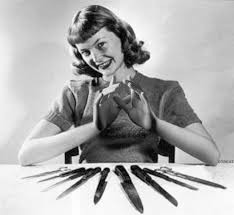
























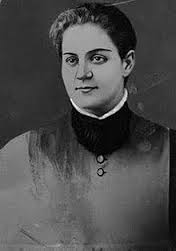


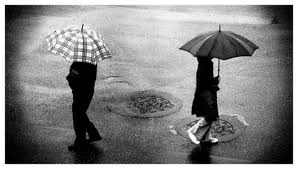

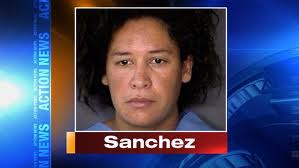

















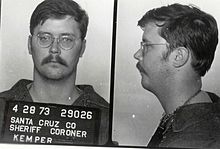



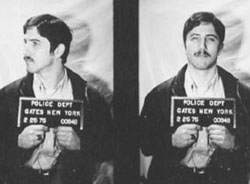










![[0000dabo37.jpg]](https://i0.wp.com/4.bp.blogspot.com/_C5XdK4lX7gg/R8z6iV8kzZI/AAAAAAAABFc/2shBuwww9o0/s1600/0000dabo37.jpg)


![[0000dabo30.jpg]](https://i0.wp.com/4.bp.blogspot.com/_C5XdK4lX7gg/R8z7CV8kzdI/AAAAAAAABF8/GT0gvkRvu2U/s1600/0000dabo30.jpg)


 Benders cabin
Benders cabin

 Dennis Radar, dressed in his dog catcher uniform.
Dennis Radar, dressed in his dog catcher uniform.



